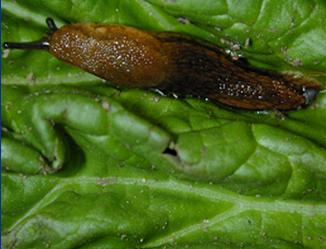
Phil Pellitteri, UW Insect Diagnostic Lab
Revised: 5/25/2010
Item number: XHT1040
Slugs are legless, soft-bodied creatures that resemble snails without a shell. Slugs feed on a wide range of plants including ornamentals, vegetables and fruits. A number of species of slugs are found in Wisconsin, but gray and spotted garden slugs are the most common, and the most likely to cause damage. Slugs overwinter either as adults or as eggs, and develop slowly, often living for more than one year. They are often found in higher numbers in areas where sod or other plant residues have been tilled under during the previous growing season. Slugs become active during the first warm days of spring, and thrive under cool, damp conditions. Slug populations will be high during and following damp, rainy weather, and will almost disappear during dry periods. Slugs cannot survive direct sunlight, and without protective hiding places during the day, they rapidly lose body moisture and die. Rock walls, boards, pots and plant debris, as well as shaded flower beds and heavily mulched gardens, serve as ideal daytime resting sites.
Slugs damage plants by chewing large, irregular holes in leaves, stems, flowers or fruits. Most feeding occurs at night or during dark, cloudy days. A shiny trail of mucus (slime) may be associated with the damage. Vegetables and fruit in direct contact with the soil are attacked more frequently than those off the ground. In Wisconsin, tomatoes are often damaged just as they ripen.
Control: There are a number of cultural control options available for controlling slugs. These include:
• removing plant debris, boards or other places where slugs might survive during the day;
• strategically placing boards, carpet patches or inverted flower pots, and collecting and destroying slugs that congregate under these items;
• watering in the morning so that gardens dry out before evening hours when slugs are most likely to be active;
• raking mulch in the winter to expose slugs to adverse environmental conditions that are likely to lead to increased mortality;
• placing copper strips around flowerpots or flowerbeds that will deter slugs from crawling onto plants;
• using regular applications of an abrasive, sharp-edged material such as diatomaceous earth, gravel or sand to deter slug movement;
• placing fresh, undiluted beer (heavy, yeasty varieties work best) in a container set flush with the ground to bait and drown slugs;
• searching your garden at night with the aid of a flashlight and destroying any slugs that you find.
Slugs are often naturally controlled by the feeding of toads, frogs, birds, ground beetles and firefly larvae. In Europe, parasitic nematodes (Phasmarhabditis hermaphrodita) have been used for slug control. Unfortunately, these nematodes products are not commercially available in the US.
Slugs can also be controlled using chemical products. However, keep in mind that slugs are not insects, and will not respond in most cases to insecticides. There are however, a number of commercial products that contain iron phosphate or metaldehyde that can be used as baits for slug control. These products are sold as pellets, or can be packaged in plastic feeding stations. Baits are most often used in large scale agricultural settings when slug control is needed. If you decide to use a commercial bait for control, be sure to read and follow all label instructions of the product that you select to insure that you use the bait in the safest and most effective manner possible.
Additional Images
Download Article






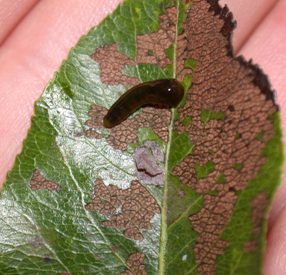 Pear Slug (Pear Sawfly)
Pear Slug (Pear Sawfly)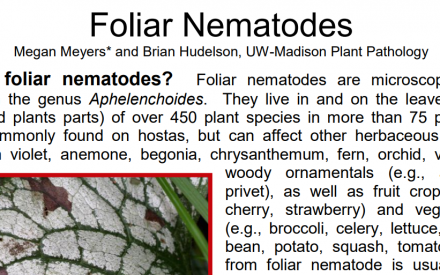 Foliar Nematodes
Foliar Nematodes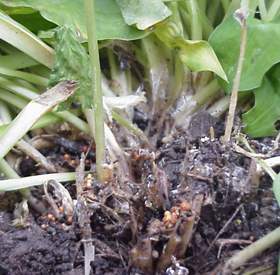 Southern Blight
Southern Blight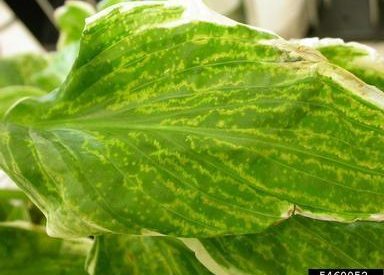 Hosta Virus X
Hosta Virus X


